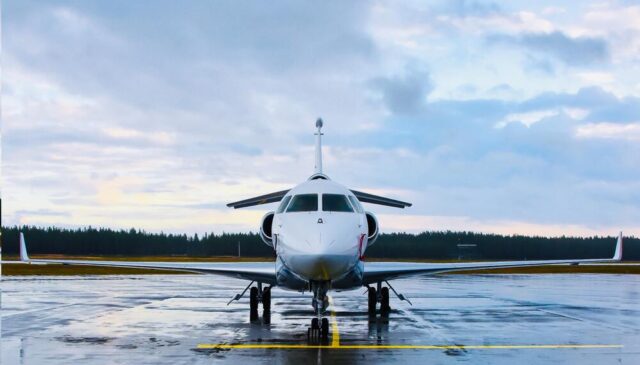
For nearly 3 years we have been in a seller’s market. I often think of the aircraft market as a clock’s pendulum. It swings back and forth between being a buyer’s market or a sellers’ market and sometimes for long periods of time rests in or around the middle. However, in recent years, the pendulum has been stuck at the top of the arc on the seller’s side.
In March of 2020 the pandemic started us all on a path we did not understand and could not predict. I recall being on many conference calls with industry experts who were not sure if the private aviation market would go into a downward spiral, stay the same, or boom. As we all know now, the demand for private aviation reached an all-time high during the pandemic. As a result, inventory for pre-owned aircraft became scarce, new aircraft order backlogs grew exponentially, the ability for immediate access in fractional programs evaporated and the charter market exploded. The sum of these factors resulted in increased aircraft prices and limitation on availability.
Consequently, the scarcity created by the pandemic (and an increase in demand as the number of people who could afford to fly privately grew), led to some of the most one-sided aircraft transactions I’ve experienced in my 25-year career. Not only have purchase prices been high but the ability to conduct reasonable pre-acquisition aircraft due diligence and the ability to negotiate reasonable terms has been hampered. In some instances, sellers have simply decided to sell to a different buyer for a higher price, in breach of a signed purchase agreement. Additionally, due to the seller having all the negotiating power, there were often time constraints on the acquisition leading to rash decisions made about ownership structure, aircraft selection and post-closing management of the aircraft. These quick closings have led to an increase in management company changes within the first year or two of aircraft ownership and an increase in sales of aircraft that were acquired in the past few years.
In 2023 we are now seeing some signs of the pendulum swinging back toward the middle. Inventory numbers are starting to increase and there are not as many immediate offers on an aircraft as soon as it is listed. However, quality, low-time aircraft in high demand categories are still selling quickly. Perhaps this too will change as we move forward in 2023.
While we are still in a seller’s market, it is not as one-sided as it once was. As a result, buyers can act more rationally and ensure that they are selecting the right aircraft and take the time needed to properly structure the ownership and operation of the aircraft and select the right aircraft management company.
Regardless of what market we are in now or in the future, when the right aircraft becomes available, a smart buyer will be ready to move so they do not miss out on the best aircraft for them. There are several things a buyer can do in anticipation of finding the right aircraft.
1. Ownership and Operating Structure A first-time aircraft buyer should engage a skilled aviation attorney to help determine the correct aircraft ownership and operating structure, including review of federal and state tax planning and regulatory compliance. Current aircraft owners should work with their aviation attorney to review the current structure and make sure it still is the best considering any changes that have occurred since the aircraft was acquired.
2. Aircraft Having an experienced and knowledgeable aircraft broker review usage patterns of the past months or years and/or what future usage may be will help to determine the right aircraft type(s) and the number of hours that will be flown. Then, use this information to determine if charter will be allowed on the aircraft.
3. Management Company Aircraft buyers should consider where the aircraft will be based, the type of aircraft being purchased and if charter is going to be permitted. (This should not just be based on which management company friends have used.) There is also the X factor in finding a management company that will be the right fit based on the culture of the company.
4. Technical Representation Select a technical representative to oversee the inspection. This may be an employee of the management company or an outside consultant. The representative should have good knowledge of the aircraft type being purchased and be able to be on-site during the pre-purchase inspection.
5. Lender The lender can be ready to approve a loan once the aircraft is identified by already having the necessary financials and ownership/operating structure in hand. This will allow the cycle time to close on the loan once the aircraft is selected to be shorter.
As we move towards a more balanced market, it is still important to be a prepared buyer. With the seller’s market waning, a buyer has more time to become a thoughtful buyer, which will hopefully result in less time and money being expended after the aircraft is acquired to correct mistakes that could have been addressed prior to closing.
